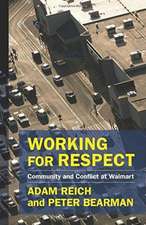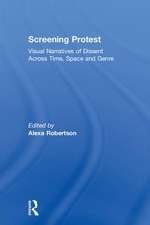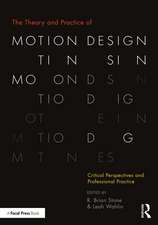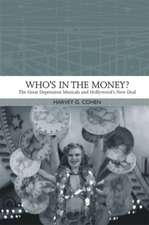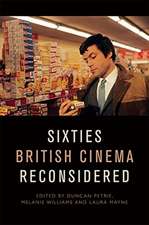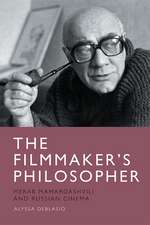The Two Cines Con Niño
Autor Erin K Hoganen Limba Engleză Paperback – 4 iun 2020
| Toate formatele și edițiile | Preț | Express |
|---|---|---|
| Paperback (1) | 159.99 lei 3-5 săpt. | |
| EDINBURGH UNIVERSITY PRESS – 4 iun 2020 | 159.99 lei 3-5 săpt. | |
| Hardback (1) | 553.76 lei 3-5 săpt. | |
| EDINBURGH UNIVERSITY PRESS – 12 sep 2018 | 553.76 lei 3-5 săpt. |
Preț: 159.99 lei
Preț vechi: 179.28 lei
-11% Nou
Puncte Express: 240
Preț estimativ în valută:
30.62€ • 33.28$ • 25.74£
30.62€ • 33.28$ • 25.74£
Carte disponibilă
Livrare economică 31 martie-14 aprilie
Preluare comenzi: 021 569.72.76
Specificații
ISBN-13: 9781474436144
ISBN-10: 1474436145
Pagini: 244
Dimensiuni: 155 x 234 x 15 mm
Greutate: 0.36 kg
Editura: EDINBURGH UNIVERSITY PRESS
ISBN-10: 1474436145
Pagini: 244
Dimensiuni: 155 x 234 x 15 mm
Greutate: 0.36 kg
Editura: EDINBURGH UNIVERSITY PRESS
Cuprins
ACKNOWLEDGEMENTS
LIST OF ILLUSTRATIONS
INTRODUCTION. The Two cines con niño: The Ventriloquism, Dialogism and Biopolitics of the Children of Franco in Genre Film
CHAPTER ONE. The Black Market and the Stolen Children of Franco in Demonios en el jardín (Gutiérrez Aragón 1982)
CHAPTER TWO. The Appropriative and Carnivalesque Ventriloquism of Altar Boys from Joselito in El pequeño ruiseñor (del Amo 1956) to Ignacio in La mala educación (Almodóvar 2004)
CHAPTER THREE. Ventriloquism, Kidnapping and the Carnivalesque in Marisol's Tómbola (Lucía 1962)
CHAPTER FOUR. Adopting, Adapting, Appropriating in the cines con niño: Un rayo de luz (Lucía 1960) and El viaje de Carol (Uribe 2002)
CHAPTER FIVE. Prosopopeia and the Gothic Child from Marcelino pan y vino (Vajda 1955) to El orfanato (Bayona 2007)
CHAPTER SIX. Dialogism and Ritual Function of the nuevo cine con niño: El espíritu de la colmena (Erice 1973), Secretos del corazón (Armendáriz 1997) and El laberinto del fauno (Del Toro 2006)
CHAPTER SEVEN. Queering Postwar Childhood in Urte ilunak (Lazkano 1992) and Pa negre (Villaronga 2010)
CHAPTER EIGHT. The Transatlantic Dialogism in Narrative and Aesthetics of Bildungsfilms: La lengua de las mariposas (Cuerda 1999 Spain) & Machuca (Wood 2004 Chile), El espíritu de la colmena (Erice 1973 Spain) & El premio (Markovitch 2011 Argentina-Mexico), El laberinto del fauno (Del Toro 2006 Spain-Mexico) & Infancia clandestina (Ávila 2011 Argentina)
CONCLUSION. Spanish Movies: Genre, Nation and Spanish Movie (Ruiz Caldera 2009)
SELECT FILMOGRAPHY
BIBLIOGRAPHY
LIST OF ILLUSTRATIONS
INTRODUCTION. The Two cines con niño: The Ventriloquism, Dialogism and Biopolitics of the Children of Franco in Genre Film
CHAPTER ONE. The Black Market and the Stolen Children of Franco in Demonios en el jardín (Gutiérrez Aragón 1982)
CHAPTER TWO. The Appropriative and Carnivalesque Ventriloquism of Altar Boys from Joselito in El pequeño ruiseñor (del Amo 1956) to Ignacio in La mala educación (Almodóvar 2004)
CHAPTER THREE. Ventriloquism, Kidnapping and the Carnivalesque in Marisol's Tómbola (Lucía 1962)
CHAPTER FOUR. Adopting, Adapting, Appropriating in the cines con niño: Un rayo de luz (Lucía 1960) and El viaje de Carol (Uribe 2002)
CHAPTER FIVE. Prosopopeia and the Gothic Child from Marcelino pan y vino (Vajda 1955) to El orfanato (Bayona 2007)
CHAPTER SIX. Dialogism and Ritual Function of the nuevo cine con niño: El espíritu de la colmena (Erice 1973), Secretos del corazón (Armendáriz 1997) and El laberinto del fauno (Del Toro 2006)
CHAPTER SEVEN. Queering Postwar Childhood in Urte ilunak (Lazkano 1992) and Pa negre (Villaronga 2010)
CHAPTER EIGHT. The Transatlantic Dialogism in Narrative and Aesthetics of Bildungsfilms: La lengua de las mariposas (Cuerda 1999 Spain) & Machuca (Wood 2004 Chile), El espíritu de la colmena (Erice 1973 Spain) & El premio (Markovitch 2011 Argentina-Mexico), El laberinto del fauno (Del Toro 2006 Spain-Mexico) & Infancia clandestina (Ávila 2011 Argentina)
CONCLUSION. Spanish Movies: Genre, Nation and Spanish Movie (Ruiz Caldera 2009)
SELECT FILMOGRAPHY
BIBLIOGRAPHY
Notă biografică
Erin Hogan is an Assistant Professor of Spanish at the University of Maryland, Baltimore County. Dr. Hogan's scholarship on the construction of childhood in Hispanic literary, visual and cinematic arts since the eighteenth century has appeared in 'Studies in Spanish and Latin American Cinemas', 'Hispanic Research Journal' and 'The Comparatist', along with edited volumes.
Descriere
Descriere de la o altă ediție sau format:
This is the first genre study of child-starred cinemas from Spain. It illuminates continuities in the political use of the child protagonist in over fifty years of Spanish cinema and how the child-starred genres deploy the concept of childhood to retrospectively define the nation and its future.
This is the first genre study of child-starred cinemas from Spain. It illuminates continuities in the political use of the child protagonist in over fifty years of Spanish cinema and how the child-starred genres deploy the concept of childhood to retrospectively define the nation and its future.




